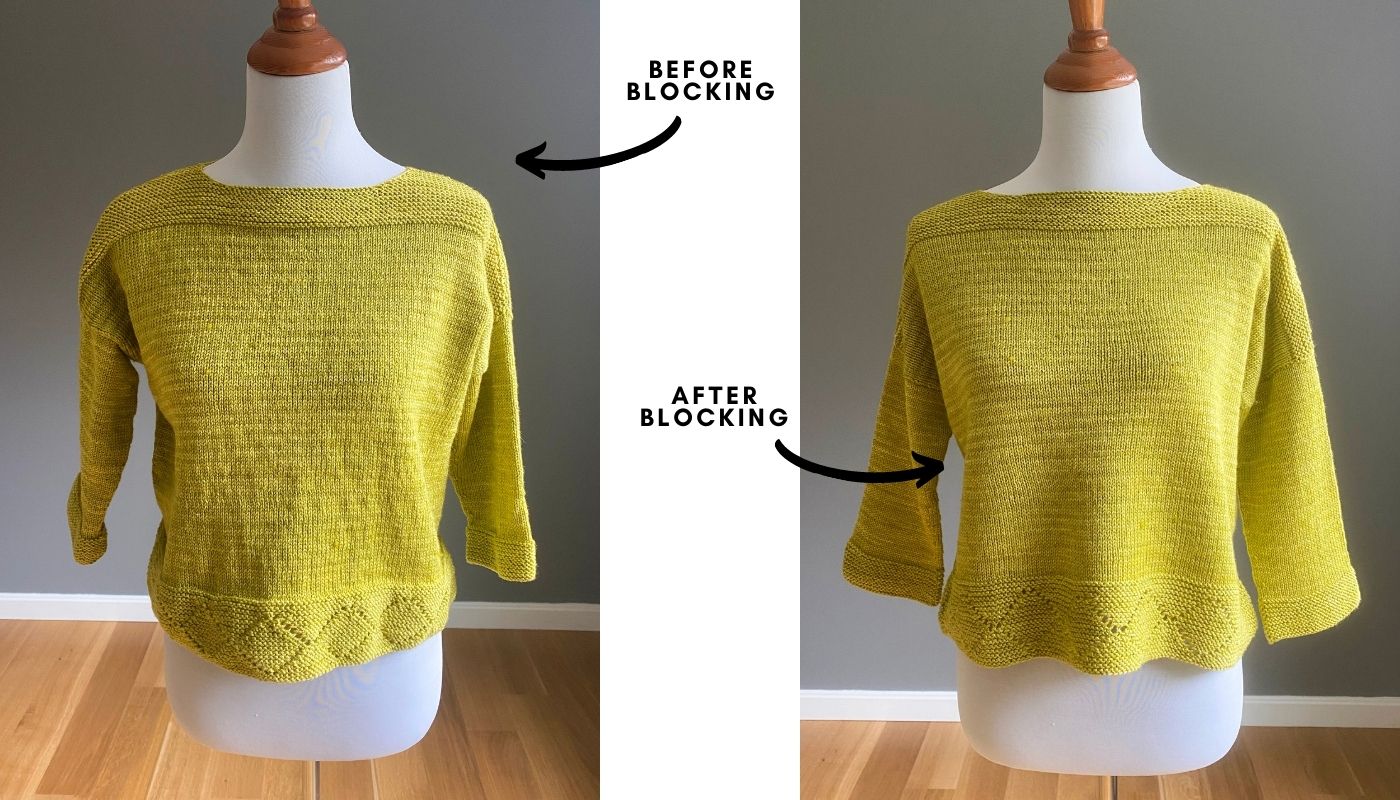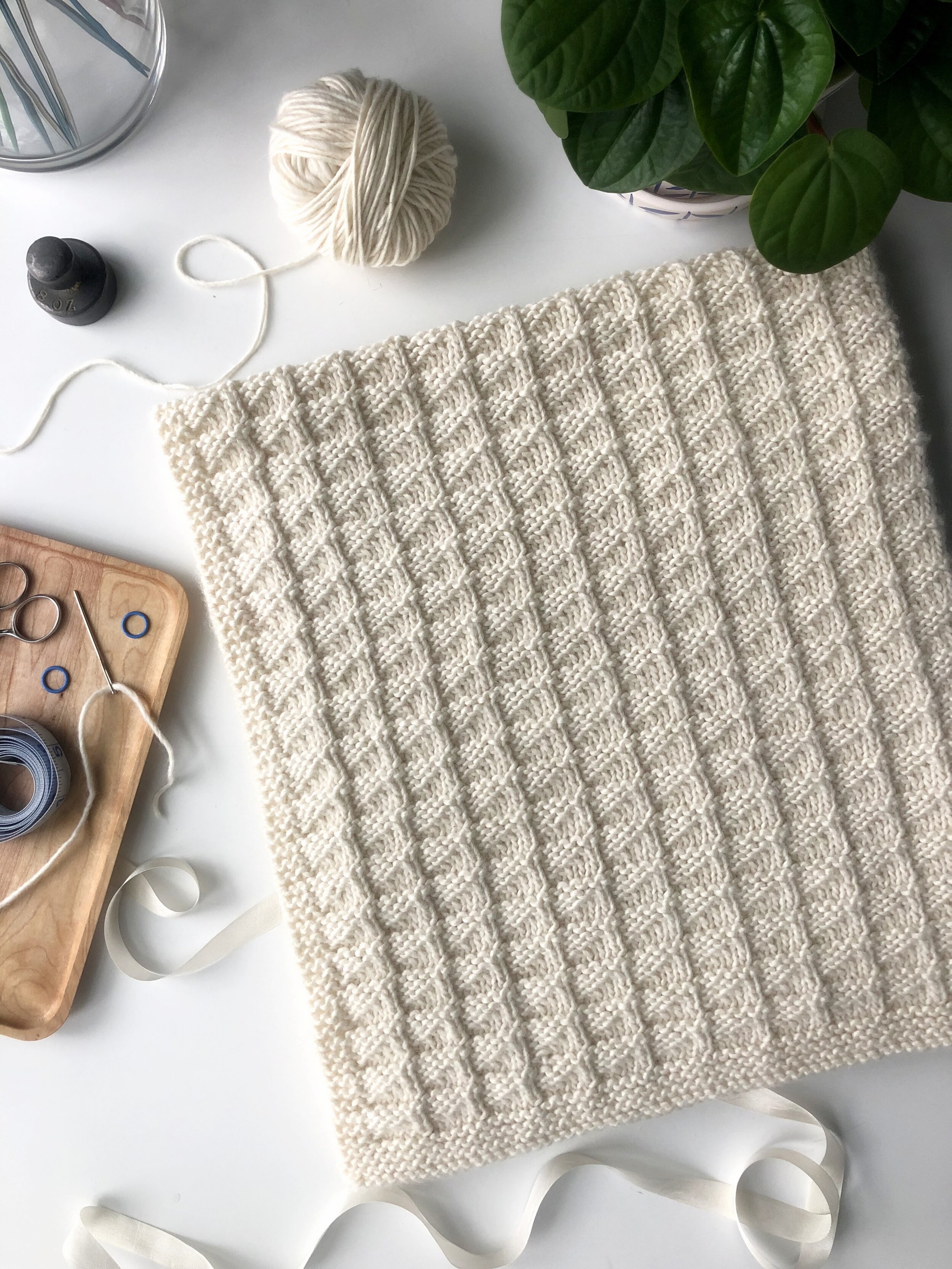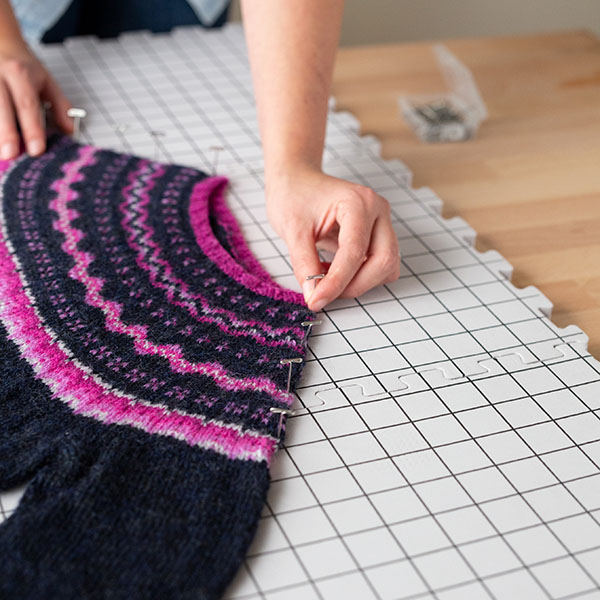Blocking Knit
Blocking Knit - Web in knitting, the blocking process is wetting/soaking or steaming your finished garments. Do not rub, twist, or wring a handknit. Blocking reshapes an item and redistributes the stitches so that they sit evenly. To squeeze out the excess water from your knitting. Before blocking knitting, weave in all loose ends; Steam, wet and spray blocking. Www.joannesweb.coma very simple way to 'block' your knits. Get your project wet by soaking, steaming, or spraying with a spray bottle. Here’s a quick summary of how each method works. To start, you will need: How it works and what you need to be aware. Web how to lay it flat. Web given that the logo is not very big, maybe just knit a plin white sweater and duplicate stitch the logo? Meaning i also don't think snipping them will work, either. Some people never block their knitting, and some people swear by it. Web there are 3 methods of blocking: Before blocking knitting, weave in all loose ends; While your item is soaking, set up the surface that you will be using for blocking. Some people never block their knitting, and some people swear by it. In the future, a motif like this on an item constructed like. To start, you will need: If you’re using the knitter’s block, configure the tiles to accommodate your knitted item. Get your project wet by soaking, steaming, or spraying with a spray bottle. Www.joannesweb.coma very simple way to 'block' your knits. Web blocking is an important final step for almost any knitting project. Before blocking knitting, weave in all loose ends; Web blocking is one of the most transformative processes in knitting. It is a simple matter of washing or wetting your newly knitted item and letting it dry flat in the shape you wish it to have. Web there are three main ways to block a knitting project: Blocking wires (not essential. To start, you will need: You’ll start by soaking your finished project in water and then shape it into the desired dimensions. Instructions and tips for how to block knitting projects using wet blocking, spray blocking, and steam blocking. Web in knitting, there’s no other simple finishing technique that will make such a difference, prevent curling, and lead to an. Blocking a finished knitting project makes a big difference in the appearance! Before wet blocking anything, check its label for instructions to avoid causing any irreversible damages to it. Once you’ve finished knitting your blanket, scarf, throw, washcloth, sweater, or other knit project, you need and want to block it. Web there are three main ways to block a knitting. Soak your knitted item in gentle wash per the yarn label instructions. This sets their shape by being stretched out. Wet blocking, steam blocking, and spray blocking. Experiment with blocking your gauge swatch before you block an actual knitted piece. You don’t want to agitate your knit too much. The process of blocking knits, evens and increases the level of drape. You don’t want to agitate your knit too much. Link to my patreon account: Web there are 3 methods of blocking: Once you’ve finished knitting your blanket, scarf, throw, washcloth, sweater, or other knit project, you need and want to block it. You don’t want to agitate your knit too much. Remove as much extra moisture as possible, typically with a towel. How do you block knitting without mats? This sets their shape by being stretched out. Choosing the correct blocking method depends on what the item is. During its first wash, a knitted garment will undergo a profound change — for a woolen handknit, the fibers will plump up and cohere into a beautifully even and sturdy fabric. Wet blocking, steam blocking, and spray blocking. Reply reply 98yellow123 • that will not fix with blocking, the floats are no where near long enough. If you’re using the. Get your project wet by soaking, steaming, or spraying with a spray bottle. Web blocking is one of the most transformative processes in knitting. Reply reply 98yellow123 • that will not fix with blocking, the floats are no where near long enough. And i’ve done blog posts before about how important i think blocking is and how it really helps to create a nice, finished look to your knit pieces. Doing so may distort the stitches beyond correction. Here’s a quick summary of how each method works. 6 steps to block your hand knits. Web in knitting, the blocking process is wetting/soaking or steaming your finished garments. Do not rub, twist, or wring a handknit. Steam, wet and spray blocking. Fill your sink or basin with cool water and a squeeze of wool wash (or shampoo). For a patterned sweater, you may wish to block the piece more aggressively, using blocking wires and pins to stretch out the body, sleeves, and yoke to open up a lace or cable. Once you’ve finished knitting your blanket, scarf, throw, washcloth, sweater, or other knit project, you need and want to block it. Soak your knitted item in gentle wash per the yarn label instructions. Link to my patreon account: Blocking reshapes an item and redistributes the stitches so that they sit evenly.
How to Block 100 Acrylic Yarn The Best Way for Knit + Crochet YouTube

How to Block Knitting YouTube

3 Things Blocking Knits Can Fix (and 3 Things It Can’t) Knitting

Blocking Knits 3 Ways To Reshape Your Knitting Handy Little Me

Before and After (blocking) Elizabeth Smith Knits

How to wet block your knits DONNAROSSA

How to Block Knitting Blocking a Hand Knit Blanket Tutorial Final

How to Block Your Knits Knitting Blocking YouTube

Blocking Knitting Video How to block knitting Knitting Then learn

How to Block Your Knitting Cocoknits
See Before & After Photos Of My Knitting Projects.
Some People Never Block Their Knitting, And Some People Swear By It.
Web In Knitting, There’s No Other Simple Finishing Technique That Will Make Such A Difference, Prevent Curling, And Lead To An Overall Nicer Stitch Definition.
Instructions And Tips For How To Block Knitting Projects Using Wet Blocking, Spray Blocking, And Steam Blocking.
Related Post: